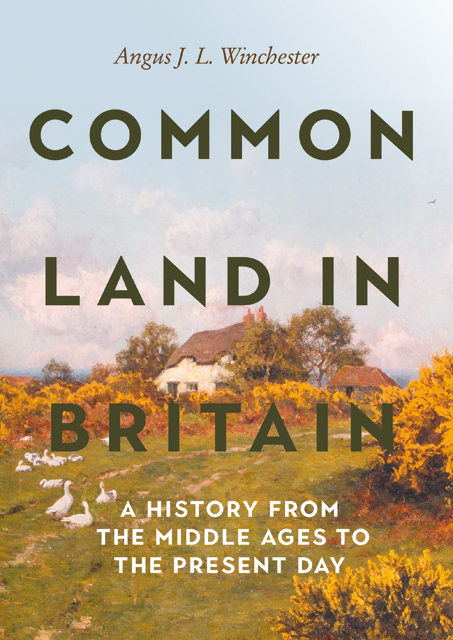Chapter 12 - Isle of Axholme Turbary Allotments, Lincolnshire
Published online by Cambridge University Press: 20 December 2022
Summary
Lincolnshire CL 2 (Epworth Turbary) and CL 8 (Belton Low Closes Turbary).
The turbary grounds allocated to village communities when wetlands surrounding the Isle of Axholme in the Humberhead Levels were enclosed in 1803 are examples of the perpetuation of shared use of common land as a result of Parliamentary enclosure. Two of the plots set aside then to supply domestic fuel for local people remain registered as common land.
Before enclosure and drainage, the open-field villages along the ridge of higher land on the Isle of Axholme were surrounded by wet carr lands, particularly on the western side stretching towards the River Torne. These spacious commons, cut by natural creeks and drainage dykes, provided pasture for large numbers of livestock, the grazing enriched by silt from regular winter flooding. The commons also yielded the assortment of fen resources typical of wetland areas: turf and peat for fuel, clay, hay (in parts), fish and wildfowl. Hemp and flax cultivation was widespread on the Isle and the commons also offered scope for digging pits and ponds in which to ‘ret’ or steep the plants in order to extract the fibre. The commons were thus so integral to the economy of the villages on the Isle that the resistance of villagers to the loss of large blocks of their commons to the ‘Participants’ in Vermuyden’s drainage scheme of the 1620s is not surprising. Serious rioting occurred from 1628 to 1634 and again during the Civil War when sluices were destroyed to flood the newly-reclaimed land and to prevent Royalist troops from reaching the staunchly Parliamentarian Isle.3 The resources of the commons also attracted migrants: it was said in 1675 that the area’s liberal turf-cutting rights drew ‘multitudes of the poorer sort’ from adjacent counties to settle there.4 Despite Vermuyden’s activities, around 12,000 acres (4,850 ha) of wetland waste, known collectively as ‘The Isle Commons’, survived until they were enclosed and drained under an act of 1795.
The Isle of Axholme Enclosure Act specified that the commissioners were to divide the wastes between the four parishes of Epworth, Haxey, Belton and Owston and to allocate to each parish one or more allotments of up to 100 acres (40 ha) ‘for a Turbary â¦
- Type
- Chapter
- Information
- Common Land in BritainA History from the Middle Ages to the Present Day, pp. 229 - 234Publisher: Boydell & BrewerPrint publication year: 2022

